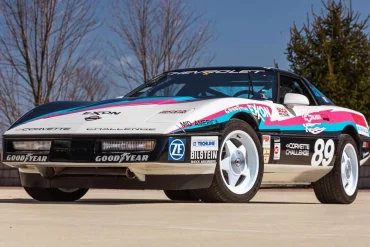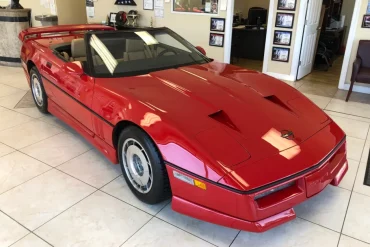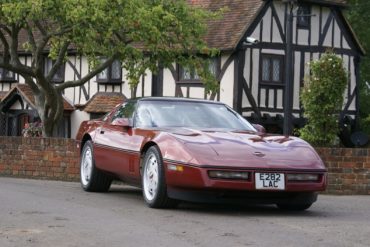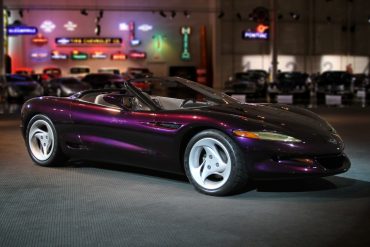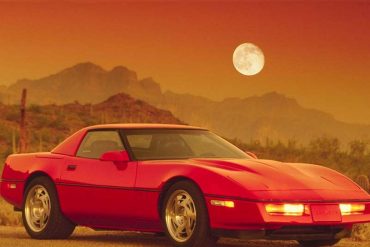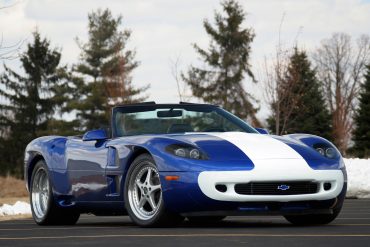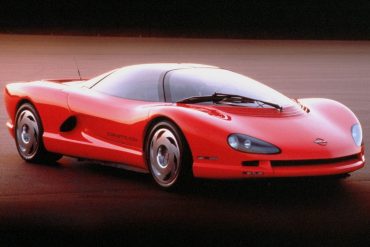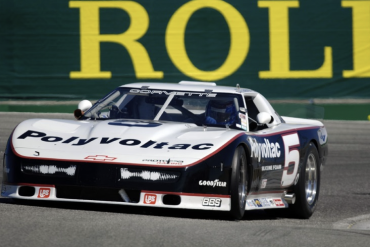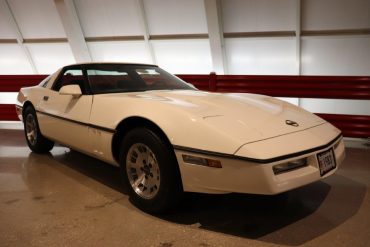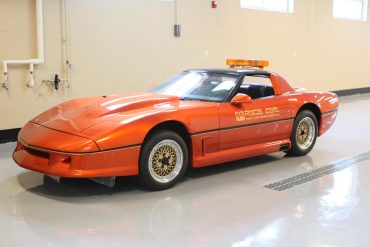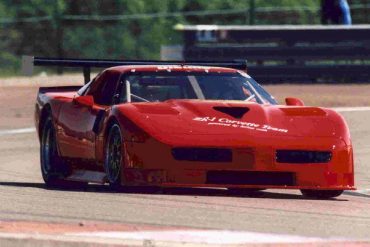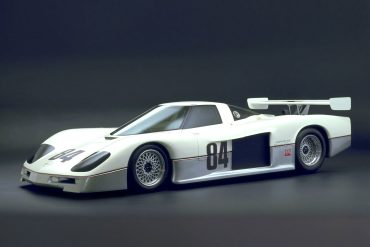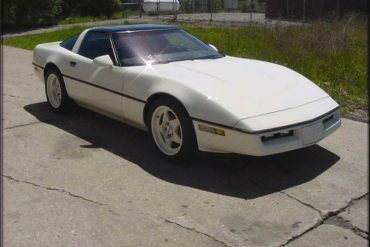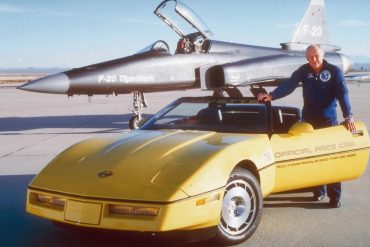The 1989 Corvette Challenge cars had a unique option code from the factory, it was "R7F". The documentation from GM clearly indicates that the cars were produced for the express purpose of racing in the SCCA Corvette Challenge Series. There is also documentation that identifies by serial number, all Corvettes produced with these option codes. Therefore, it is relatively easy to validate the authenticity of any Challenge car.
Offered from 1987 to 1991, the RPO-B2K upgrade was available from any Chevrolet dealer and also Callaway’s first major Corvette tuning program. Together, GM and Callaway made the upgrade package a Regular Production Order (RPO) which was the first time GM had outsourced such an option to a specialist manufacturer. It even had a factory back warranty. As the C4 updated, so did Callway’s program and by 1988, the B2K was pushing 382 bhp and 562 ft. lbs. of torque.
This is no ordinary C4 coupe, but a GM Engineering test mule with VIN plate EX4607 proudly displayed in the windscreen, built in 1986 to test all the new-for-1988 features. This actual car must have spent weeks pounding round the General Motors Proving Ground at Milford, Michigan with longer runs on the road, testing all the changes for a year which saw the C4 suspension, steering and brakes vastly improved.
The Corvette Stingray Concept was developed as an internal design challenge to combine classic Corvette cues with surprisingly high-tech features, modern materials, and a striking new appearance. The car is well-appointed with a clamshell hood, scissor-style doors, ergonomic seats, rear-view camera with night vision enhancement, and a high performance hybrid drive. Interactive touch controls allow the driver to customize the power and efficiency of his or her ride.
How do you beat a slew of Fox-Body 5.0 Mustangs that seemingly dominated the roads in the late '80s? You take a 454 cu.-in. big-block engine and stuff into a C4 Corvette and call it "Big Doggie". An experimental vehicle used to determine how to convert from a small block to a big block. Its 454 big block V8 along with its orange paint make this high horsepower engineering study a one-of-a-kind standout in Corvette history. The car had as much HP as the '90 ZR-1 did and it was named "ZR-2" or "Big Doggie". Old dog, new tricks joke?
To understand why the Guldstrand GS-90 coupe and convertible differ so much, keep in mind that during the course of the C4 development cycle, no ZR-1 convertibles were planned, so the base C4 convertible had to be used in building a GS-90 Nassau Roadster, as it was called. The coupe, however, had the advantage of using the ZR-1 platform right from the get-go.
The 1986 Corvette Indy Prototype was developed beyond clay modeling to the point of a fully-functioning, drivable car, though it was clearly understood that this car would never evolve beyond the prototype stage. Like the clay mock-up before it, development of the mid-engine Indy prototype began in 1985, pulling design cues from its predecessor.
The story of this Chevrolet begins with Fords - specifically, the purpose-built IMSA Mustangs and SCCA Trans Am Mercury Capris that became major forces in those series in 1984-85. In 1985, a Mustang built by Jack Roush and chassis firm Protofab took a young John Jones to the IMSA GTO crown and a Roush Protofab Mercury Capri had done the same in the Trans Am championship.
Within the National Corvette Museum's Skydome sits the only remaining 1983 Corvette; a car best characterized as a survivor, in every sense of the word. According to the Macmillan Dictionary, a survivor is, "someone or something that still exists after every other member of a group has died or been destroyed." This as it may, the 1983 Corvette lives up to this title.
The 1984 PPG Indy Pace Car Corvette was special from the very beginning- in several ways. Initially, it was created as a one-off concept car that would be designated as one of the official Pace Cars for the PPG Indy Car World Series of races. It was custom-built by PPG in cooperation with the Chevrolet Division of General Motors. The 205 HP 350 was replaced by a 450hp, 401 cubic-inch V-8.
This car was created by Doug Rippie. His claim to fame was the Corvette Challenge Series. Rippie loved racing Corvettes in the US, but, his life-long dream was to take on the world-class marques at Le Mans. So, when Chevy introduced the C4 ZR1 the opportunity was opened up. Via his collaboration with MerCruiser and Lotus Engineering, all with Chevy’s blessing, the "Black Widow" program created special street and race versions of the LT5 engine. This engine made 525hp.
A Corvette in name only, the Corvette GTP (Grand Touring Prototype) was one of the fastest and most exotic race cars ever to wear a red Bowtie. Based on an English Lola T600 chassis and powered by an all-American turbocharged Chevy V6, the mid-engined racer was a rocketship. At full boost, the Corvette GTP's 3.4-liter (209ci) V6 pumped out more than 1,000 horsepower.
In the late 80s, Chevy was developing what some dubbed a ‘Super Vette.’ But the 1989 debut of the Dodge Viper sent GM engineers on a new path to develop a ‘Viper-Killer.’ It started with a factory test mule and the experiment was to see how a ZR-1 would perform if given more power and less weight. It was so fast it was called "Snake Skinnner", for it's ability to beat the Viper and Cobra.
The big news for 1986 was that a Corvette would pace the Indy 500 for the second time. Retired General Chuck Yeager was enjoying celebrity status as a result of the book and movie, “The Right Stuff.” But Chevrolet was still smarting from the heavy criticism over the ‘78 Corvette Pace Car debacle and decided that all 1986 Corvette convertibles were designated as “Pace Car Replica”.
No More Content


